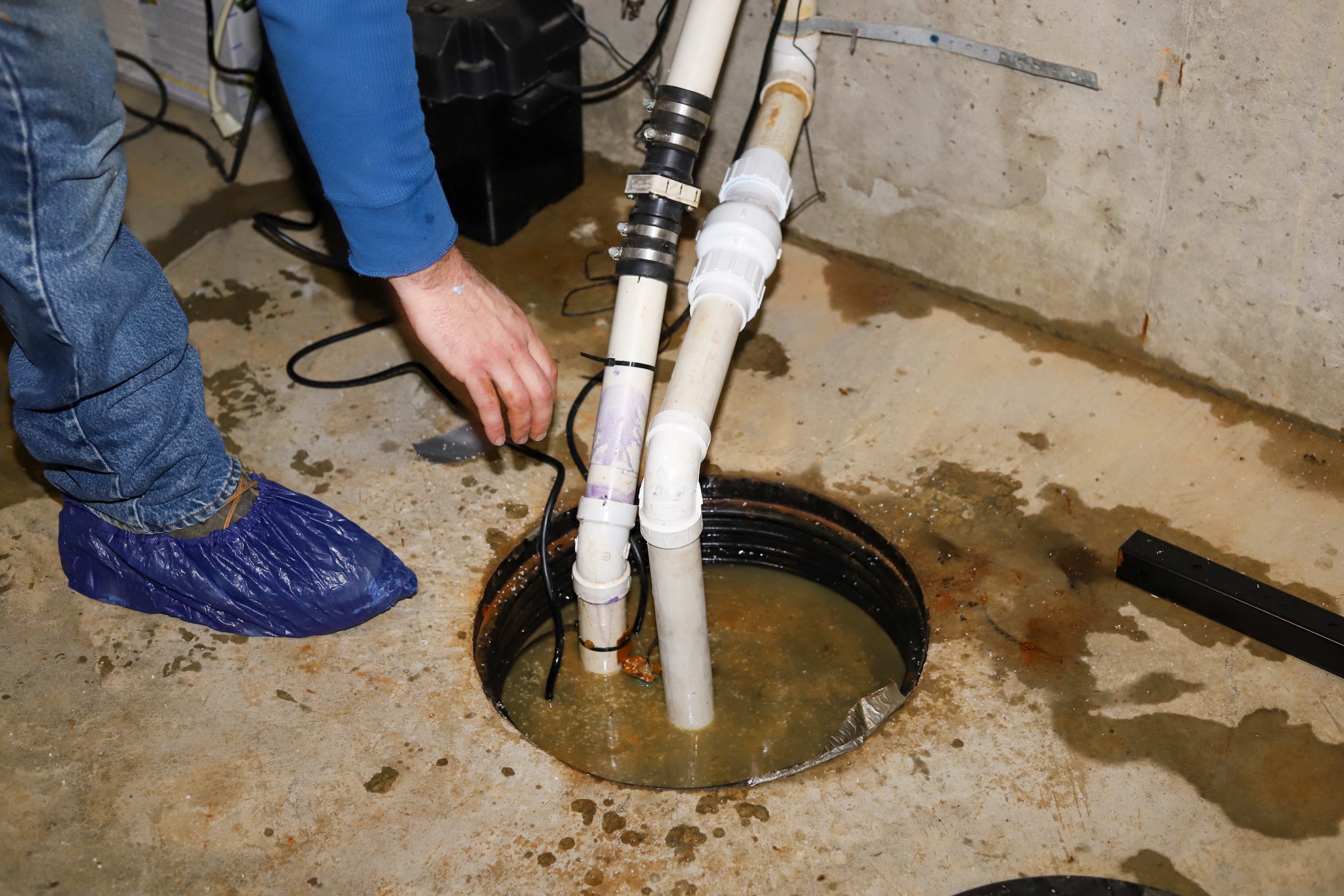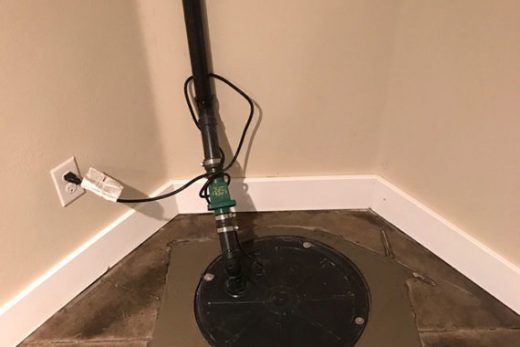Effortless Methods to Maintain a Sump Pump
Effortless Methods to Maintain a Sump Pump
Blog Article
This great article down below in relation to Cleaning & Maintenance Tips for Your Home's Sump Pump is highly stimulating. You should check it out.

Sump pumps are vital parts in many homes, especially in locations vulnerable to flooding or too much moisture. They assist protect against water damages by successfully eliminating excess water from cellars or crawl spaces. However, like any other device, sump pumps need normal upkeep to ensure they operate properly when required one of the most. Cleansing your sump pump is a crucial part of its upkeep, and comprehending just how to do it effectively can conserve you from expensive repair services and possible disasters.
Intro
Preserving a tidy sump pump is crucial for its proper functioning and durability. Ignoring this important task can lead to blockages, malfunctions, and ultimately, water damage to your residential or commercial property. As a result, discovering how to clean a sump pump is crucial for property owners that count on these gadgets to maintain their basements completely dry and secured.
Indicators of a Dirty Sump Pump
Understanding when your sump pump requires cleansing is vital for protecting against possible malfunctions. Some usual indicators that indicate a dirty sump pump consist of odd noises throughout operation, reduced water circulation, and noticeable debris in the pit. If you notice any one of these signs and symptoms, it's necessary to clean your sump pump immediately to prevent any type of additional issues.
Planning for Cleaning
Before you start cleansing your sump pump, it's necessary to take some safety preventative measures. Begin by shutting down the power to the pump to prevent any kind of electric crashes. Furthermore, put on proper safety equipment, such as gloves and safety glasses, to shield on your own from dust, debris, and prospective pathogens.
Understanding the Sump Pump
Prior to diving right into the cleaning procedure, it's important to have a fundamental understanding of exactly how a sump pump functions. Commonly set up in a pit or container listed below the basement flooring, a sump pump includes a number of crucial elements, consisting of a pump, a float button, and a discharge pipeline. When water collects in the pit, the float button turns on the pump, which after that pumps the water out through the discharge pipe, away from the building's structure.
Step-by-step Guide to Cleaning a Sump Pump
Turning off the Power
Begin by disconnecting the power supply to the sump pump to stop any kind of accidents while cleansing.
Looking For Proper Functioning
Prior to reinstalling the pump, carry out a fast examination to guarantee that the float button turns on the pump correctly. Pour some water right into the sump pit and observe the pump's operation. If everything is operating correctly, you can reconstruct the pump and reconnect the power supply.
Removing Particles and Dirt
Use a pail or an inside story to get rid of any visible debris, dust, or sediment from the sump pit. Dispose of the debris effectively to avoid it from clogging the pump or the discharge pipeline.
Cleaning the Pump and Drift Switch Over
When the pit is clear of particles, carefully remove the pump from the pit. Check the pump and the float switch for any type of indicators of damages or wear. Use a soft brush or cloth to cleanse the surface areas and remove any kind of accumulated grime.
Purging the System
After cleansing the pump and float switch, purge the sump pit with tidy water to remove any type of staying dust or debris. This will certainly help guarantee that the pump runs smoothly and effectively.
Upkeep Tips to Maintain Your Sump Pump Clean
Along with periodic cleansing, there are a number of upkeep suggestions you can comply with to keep your sump pump in optimum problem:
Conclusion
Cleansing your sump pump is a critical element of its upkeep and guarantees that it operates efficiently when you need it one of the most. By following the actions laid out in this overview and integrating normal upkeep into your regimen, you can extend the life expectancy of your sump pump and shield your home from water damage.
6 STEPS ON HOW TO CLEAN A SUMP PUMP PROPERLY
UNDERSTANDING SUMP PUMPS
Your sump pump plays a crucial role in protecting your home by managing and removing excess water. It primarily functions as a “shield”, guarding your basement against the damaging effects of water accumulation. The pump is housed in a sump pit in the lowest part of your basement, and its job is to pump out any water that collects there.
During heavy rainfalls or when snow melts rapidly, water can infiltrate your basement, posing potential risks like flooding, structural damage, and harmful mold growth. Here, the sump pump springs into action, pumping out the intruding water and directing it away from your home.
SAFETY FIRST
Before cleaning, remember to prioritize safety. Disconnect the sump pump from the power source to prevent any accidental electric shocks. Also, wear sturdy gloves to protect your hands from any sharp or dirty components within the pump.
REMOVE THE SUMP PUMP
After ensuring your safety, the next step is to remove the sump pump from its pit. Doing this might require careful maneuvering as you don’t want to damage any pump components. Once removed, clean the sump pit to remove any accumulated debris or sludge.
INSPECT THE PUMP
Inspect the pump for any visible signs of wear or damage. Check the power cord, float switch, and impeller housing. If any components look worn out or damaged, consider replacing them to ensure optimal performance.
CLEAN THE PUMP
Thoroughly clean the pump with warm, soapy water. Make sure to rid it of any dirt, gravel, or other debris that might impede its performance. You can use a toothbrush to clean the small, hard-to-reach parts of the pump.
REINSTALL THE SUMP PUMP
Reinstall the pump into the sump pit Make sure it’s positioned correctly to remove the water effectively Once it’s back in place, reconnect it to the power source TEST THE PUMP
Finally, pour some water into the pit to ensure the pump works correctly. It should start automatically and begin pumping out the water; if it doesn’t, check the power source and the positioning of the pump.
Remember, while cleaning your sump pump is an essential part of home maintenance, hiring a professional plumber for a thorough inspection and cleaning at least once a year is also important. This will ensure that your pump is in optimal condition, ready to protect your home from potential water damage.
BEST PRACTICES FOR CLEANING SUMP PUMP DISCHARGE PIPES
Regular Inspection: Regularly inspect your discharge pipes, especially during heavy rainfall or snowmelt periods. Look for any signs of blockage or damage. Early detection of problems can prevent serious issues down the line. Periodic Cleaning: Over time, sediment and debris can accumulate in the discharge pipes, impeding the flow of water. Regular cleaning helps keep the pipes clear and functioning efficiently. You can use a high-pressure water jet to effectively clean the pipes. Insulation During Winter: In colder climates, discharge pipes can freeze, blocking the outflow of water. Protect your discharge pipes from freezing temperatures by insulating them with foam pipe insulation. This will ensure the sump pump can continue to discharge water even in freezing conditions. Proper Positioning: The discharge pipe should be positioned to direct water away from your home’s foundation. Improper positioning can lead to water seeping back into the basement. Ensure the pipe is long enough and angled correctly. Installation of a Check Valve: A check valve prevents water from flowing back into your sump pit after the pump has pushed it out. Installing a check valve helps maintain the efficiency of your sump pump and reduces the risk of flooding. Minimize Pipe Turns: Every curve or turn in the discharge pipe can decrease the efficiency of water flow. By minimizing turns and bends in your discharge pipe, you can increase the efficiency of your sump pump. https://www.fullspeedplumbing.com/how-to-clean-a-sump-pump-properly9999/

Hopefully you enjoyed reading our part about How to Care for Your Sump Pump. Thank you so much for taking time to browse our blog post. Sharing is good. Who knows, you may very well be helping someone out. We truly appreciate your readership.
Additional Information Report this page